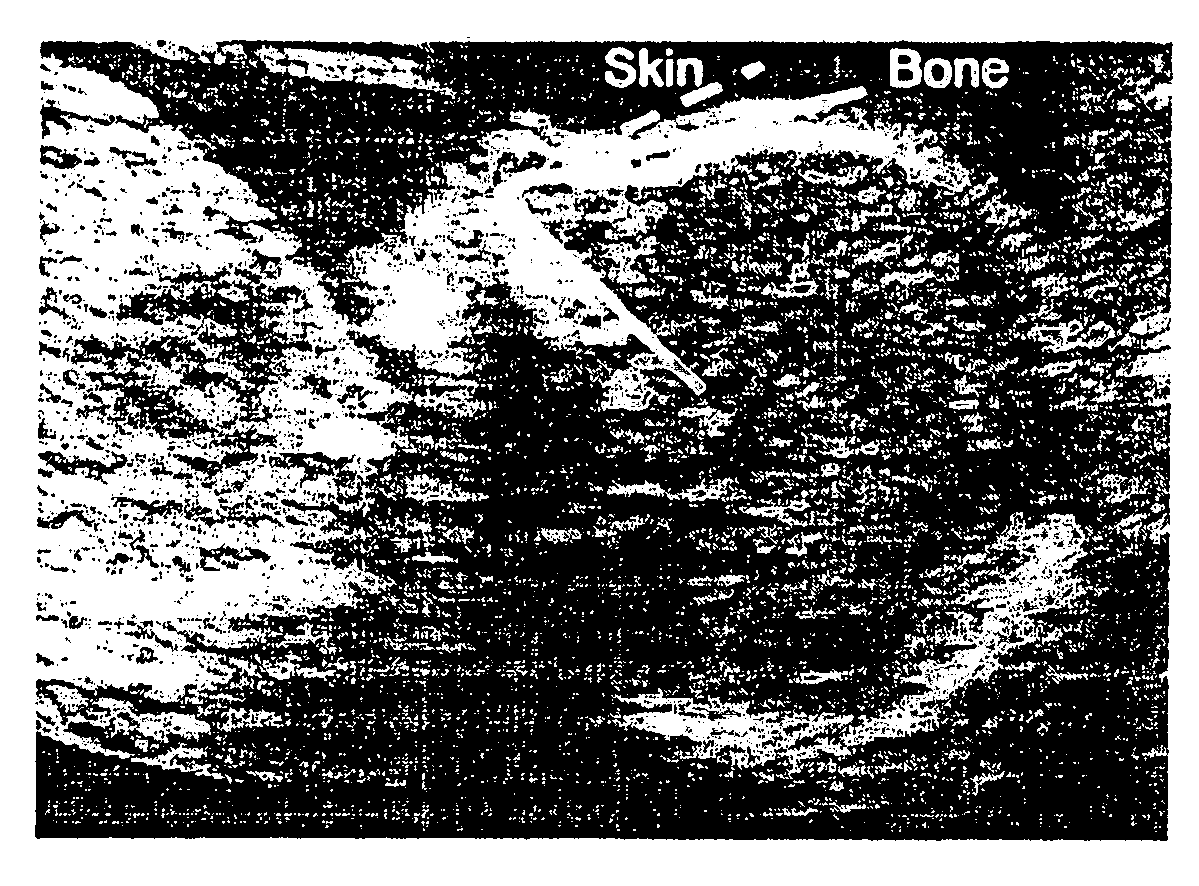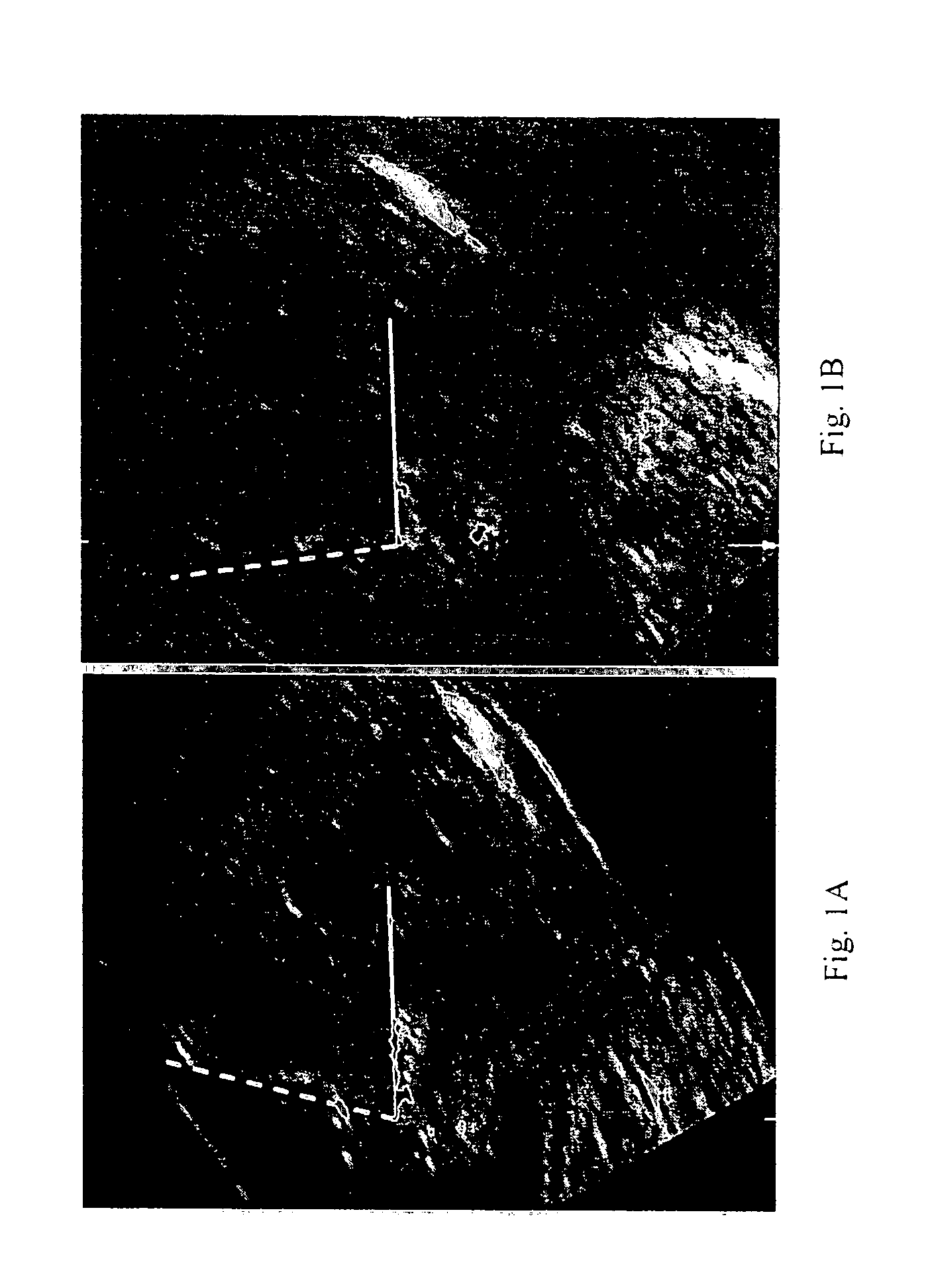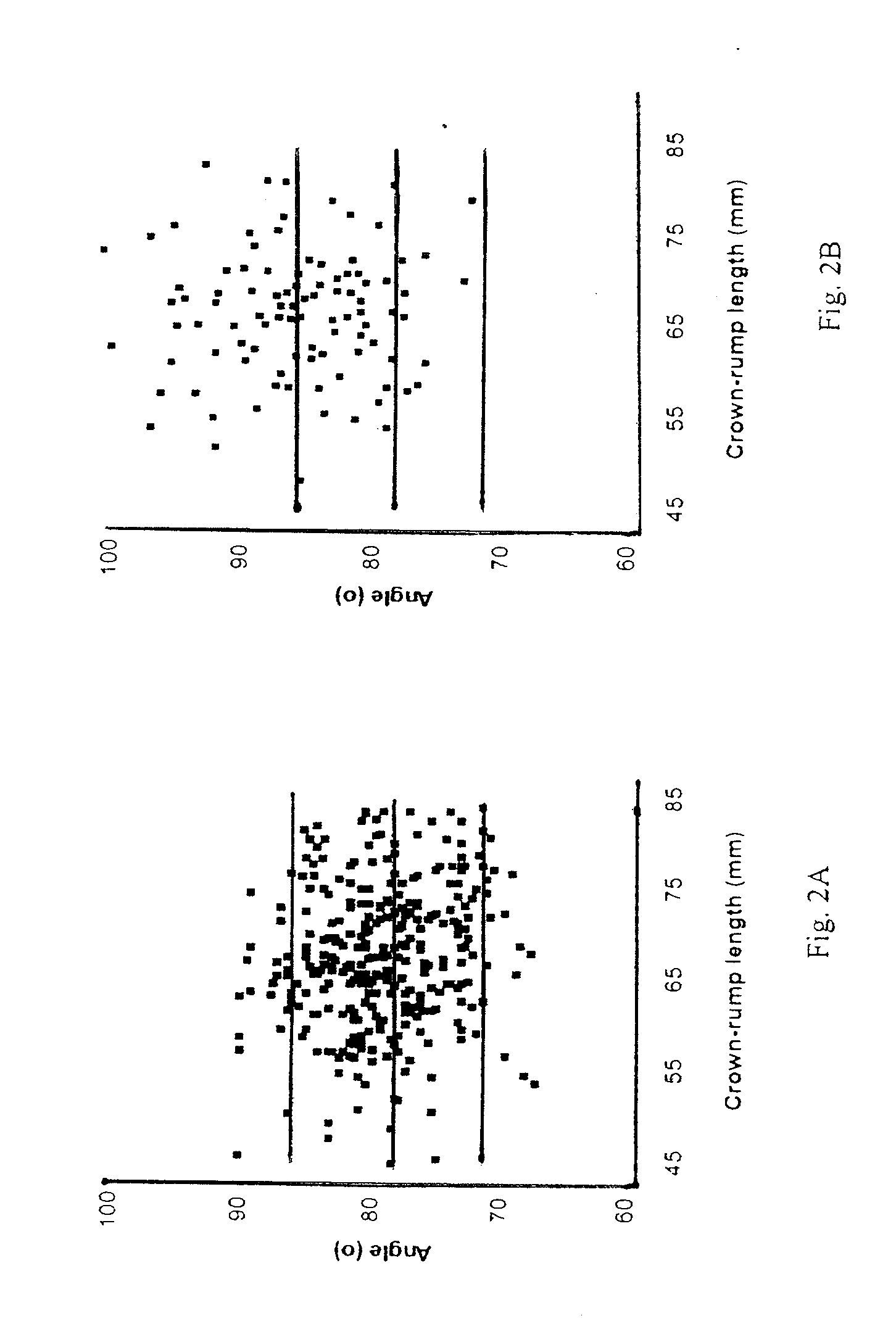Methods of prenatal screening for trisomy 21
a trisomy 21 and prenatal screening technology, applied in the field of trisomy 21 prenatal screening, can solve the problems that the difference between maxillary measurements between trisomy 21 and euploid fetuses has not been large enough to be clinically useful, and the effect of reducing the risk of euploid fetuses and reducing the risk of euploid fetus developmen
- Summary
- Abstract
- Description
- Claims
- Application Information
AI Technical Summary
Benefits of technology
Problems solved by technology
Method used
Image
Examples
example 1
[0026]This retrospective study utilized 3D volumes of the fetal face, which are acquired before fetal karyotyping by chorionic villus sampling (CVS) at 11-13+6 weeks of gestation. The fetuses are determined as being at risk of trisomy 21 based on the combination of maternal age and nuchal translucency measurement. Singleton pregnancies only are used. In each fetus, the crown-rump length and nuchal translucency thickness are measured in a standard fashion. A mid sagittal image of the fetal face is examined for the presence or absence of the nasal bone.
[0027]A database of stored images and diagnoses is reviewed and 100 consecutive cases of fetal trisomy 21 and 300 chromosomally normal fetuses in which a 3D volume of the fetal face had been obtained, are identified. The images are obtained with the fetus in the mid-sagittal plane with the transducer being parallel to the long axis of the nose. All 3D examinations are carried out transabdominally (RAB 4-8L probe, Voluson 730 Expert, GE ...
example 2
[0037]This study involved a review of stored digital 2D images of fetal profiles, taken from singleton pregnancies before amniocentesis for fetal karyotyping at 14-24 weeks of gestation, wherein 100 consecutive pregnancies in which the fetal karyotype was normal and 34 fetuses with trisomy 21 were examined. All images were obtained using Sequoia 512 (Siemens) system. The angles were measured using on-line tools in the KinetDx (Siemens) PAC system.
[0038]The following data were retrieved from the patient records: maternal age, gestational age, indication for karyotyping, the findings at the ultrasound examination carried out before amniocentesis, including fetal abnormalities or markers for aneuploidy and presence or absence of the nasal bone.
[0039]The images had been obtained by transabdominal sonography with the fetus facing the transducer. The ideal angle of insonation with respect to the longitudinal axis of the upper palate was determined to be about 45°. In this plane the upper ...
PUM
 Login to View More
Login to View More Abstract
Description
Claims
Application Information
 Login to View More
Login to View More - R&D
- Intellectual Property
- Life Sciences
- Materials
- Tech Scout
- Unparalleled Data Quality
- Higher Quality Content
- 60% Fewer Hallucinations
Browse by: Latest US Patents, China's latest patents, Technical Efficacy Thesaurus, Application Domain, Technology Topic, Popular Technical Reports.
© 2025 PatSnap. All rights reserved.Legal|Privacy policy|Modern Slavery Act Transparency Statement|Sitemap|About US| Contact US: help@patsnap.com



